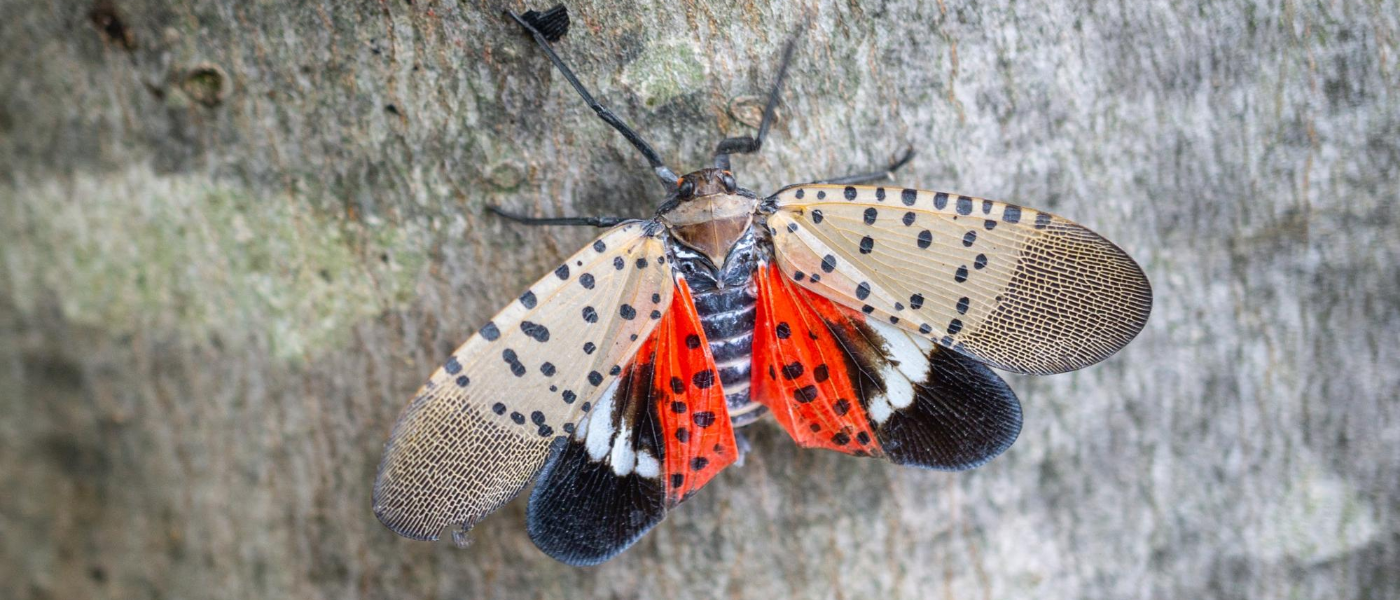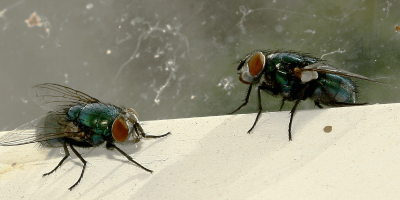The Invasive Beaut Coming After Your Crops

To the eye, they’re quite pretty, with their striped and polka-dotted forewings, yellow abdomens and a brilliant shock of red on their hindwings. But to the orchards, vineyards, grain fields and trees of the northeastern United States, they’re nothing less than deadly.
Meet New England’s soon-to-be most unwanted: the spotted lanternfly, or Lycorma delicatula.
The Lowdown on the Lanternfly
A native of southeast Asia, the spotted lanternfly was first discovered in Pennsylvania in 2014 and, as of February 2019, has been found as far northeast as Massachusetts, inside a Boston home. There have also been sightings in Michigan, as well as New Jersey, Delaware, Virginia, New York and Maryland.
There’s no denying it—the spotted lanternfly is on the move, and that’s bad news for New England agriculture.
Spotted lanternflies are a type of insect called “planthoppers,” which includes cicadas, aphids, whiteflies and thrips. Some species—such as cicadas—are essentially harmless. Others, such as certain types of aphids and the spotted lanternfly—are considered invasive, meaning they are not native to the adoptive ecosystem to which they cause harm.
Spotted lanternflies pose a particular threat to fruit trees, grapevines, grain fields, and lumber-producing tree farms. Lanternflies damage and destroy plants and trees by piercing them with their sharp beaks and slurping up their sap.
One of the byproducts of this process is a sticky, sweet substance scientists dub “honeydew,” which drips all over the infected vegetation and promotes the growth of sooty, black mold that destroys crops such as apples, grapes and hops.
Taking a Bite out of Farming’s Bottom Line
The impact of the devastation these destructive little critters wreak on farmers cannot be overstated. According to the USDA, “Healthy plants are vital to sustainable and profitable crop production and to the quality and cost of the nation’s supply of food, fuel and fiber.”
The flagship publication of the Entomological Society of America, Entomology Today, ranks spotted lanternflies among the top four most invasive insects in the United States. The ESA notes that, although the state of Pennsylvania has instituted a quarantine, spotted lanternflies lay their egg masses anywhere they see fit, including on fences and stones. This makes them some of the most effective hitchhikers among invertebrates.
How to Stop the Spread of Spotted Lanternflies
Besides reporting spotted lanternfly sightings, there are a few measures residents and homeowners can take on their own to help prevent their spread.
First, when traveling out of a quarantine zone, it’s important to check your automobile and any outdoor equipment (lawn chairs, grills, etc.) for stowaways; especially egg masses, which spotted lanternflies love to lay in wheel wells and undercarriages. Firewood should never be transported out of quarantine zones.
At home, property owners can check for egg masses on trees, rocks, cement or any hard surface around the yard. Between September and May, eggs can be scraped into an alcohol-filled container with a plastic card or putty knife and disposed of. Egg masses can also be smashed or burned.
Infestation can be minimized by banding the circumference of trees with sticky tape. This prevents the insects from migrating to the tops of trees where they like to feed on newer, softer growth.
Spotted lanternflies are particularly fond of the Tree-of-Heaven, which, coincidentally, is another invasive species originally from southeast Asia. Not only are Trees-of-Heaven a nuisance in their own right (they grow rapidly and uncontrollably and are virtually impossible to kill without completely uprooting them), they’re also prime breeding grounds for spotted lanternflies. Removing Trees-of-Heaven from your property will not only reduce the spotted lanternfly population, but it can also potentially save your other foliage from being overtaken by the invasive tree species.
Although individuals may not be able to combat the spotted lanternfly problem on a large scale, every effort, big or small, helps. Meanwhile, government agencies and agricultural organizations are working diligently to come up with containment measures to assist both home gardeners as well as commercial farmers in protecting their crops.
The spotted lanternfly may be appealing to look at, but their path of destruction is anything but pretty. Hopefully, with the concerted effort of everyone affected, this new citizen of the northeast won’t spread any further.
Not sure if you’re looking at a spotted lanternfly? Send a picture to Dr. Gary for a free identification.



